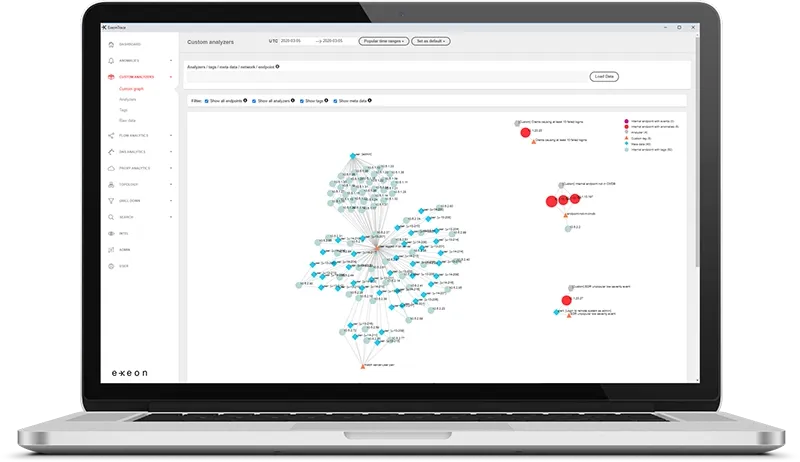Intrusion Detection: Safeguarding Your Network from Cyber Threats
In the ever-evolving landscape of cybersecurity, protecting sensitive data and networks from malicious intrusions has become a paramount concern for businesses and organizations. Intrusion Detection plays a pivotal role in fortifying your network's defenses against cyber threats. In this comprehensive guide, we will delve into the world of Intrusion Detection, understanding its significance, methodologies, and best practices for a secure digital environment.

What is Intrusion Detection?
Intrusion Detection is a crucial component of network security that involves monitoring and analyzing network traffic to identify unauthorized access attempts, security breaches, and potentially harmful activities. This proactive approach empowers businesses to detect and respond swiftly to cyber threats, minimizing potential damage and data loss.
What is an Intrusion Detection System (IDS)?
An Intrusion Detection System (IDS) is a critical component of modern cybersecurity. It is designed to monitor and analyze network traffic for signs of unauthorized access, security breaches, and potential threats. Its primary objective is to proactively detect and respond to cyber incidents, ensuring the protection of sensitive data and network infrastructure.
Types of Intrusion Detection Systems
There are two primary types of Intrusion Detection Systems:
1. Network-Based Intrusion Detection Systems (NIDS)
Network-Based Intrusion Detection Systems monitor network traffic in real-time, examining data packets for suspicious patterns and known attack signatures. NIDS can be placed strategically throughout the network to ensure comprehensive coverage.
2. Host-Based Intrusion Detection Systems (HIDS)
Host-Based Intrusion Detection Systems focus on individual devices, monitoring activities on specific hosts or servers. HIDS provides an additional layer of protection by identifying potential threats that may not be visible at the network level.

How Does Intrusion Detection Work?
Intrusion Detection operates on two main principles:
1. Signature-Based Detection
Signature-Based Detection relies on a vast database of known attack signatures. As network traffic passes through the IDS, it compares incoming data packets against this database, triggering alerts when matches are found.
2. Anomaly-Based Detection
Anomaly-Based Detection establishes a baseline of normal network behavior. When the IDS detects any deviations from this baseline, it raises alerts, indicating potential intrusion attempts or suspicious activities.
Benefits of an Intrusion Detection System
Implementing an effective Intrusion Detection system offers several key advantages:
Early Threat Detection
By continuously monitoring network activities, Intrusion Detection enables early detection of potential threats, preventing cyber incidents before they escalate.
Incident Response Improvement
Intrusion Detection provides security teams with real-time alerts and valuable insights, facilitating swift and effective incident response to mitigate potential damages.
Protecting Sensitive Data
With the ability to identify unauthorized access attempts, Intrusion Detection plays a vital role in safeguarding sensitive data from falling into the wrong hands.

Best Practices for Intrusion Detection
To optimize the effectiveness of Intrusion Detection, consider the following best practices:
Regular Updates and Maintenance
Keep the IDS system up-to-date with the latest threat signatures and software patches to stay ahead of emerging cyber threats.
Integration with Security Infrastructure
Integrate the Intrusion Detection system with existing security infrastructure, such as firewalls and SIEM, to create a comprehensive and cohesive security ecosystem.
Ongoing Monitoring and Analysis
Consistently monitor and analyze network traffic to identify new threats and enhance the accuracy of anomaly detection.

The 7 Limitations of Intrusion Detection Systems (IDS)
False Positives and False Negatives: IDS may produce false positives, indicating potential threats that are not actual breaches, and false negatives, missing genuine security threats due to evasion techniques or new attack patterns.
Dependence on Signature Updates: Signature-Based IDS requires regular updates to its signature database to detect new attack patterns, outdated databases may lead to missing emerging threats.
Limited Visibility in Encrypted Traffic: IDS struggles to analyze encrypted traffic, limiting its effectiveness in detecting threats hidden within encrypted communications.
Resource Intensive: IDS can be resource-intensive for high-traffic networks, causing performance issues due to continuous monitoring and analysis.
Inability to Prevent Attacks: IDS serves as a detection tool and cannot actively prevent attacks, necessitating complementary Intrusion Prevention Systems (IPS) for real-time mitigation.
Lack of Contextual Understanding: IDS may lack contextual insight into network activities, making it challenging to assess the severity of detected incidents accurately.
Evasion Techniques: Sophisticated attackers may evade IDS detection using various techniques, reducing its effectiveness in identifying such threats.
How ExeonTrace NDR Can Address IDS Limitations
ExeonTrace, as an advanced Network Detection and Response (NDR) solution, offers several features that help overcome the limitations of traditional Intrusion Detection Systems (IDS) and provide enhanced network security.
Signature-Free Detection:
ExeonTrace does not rely on pre-programmed signatures for threat detection. Instead, it utilizes sophisticated analytical protocols and machine learning algorithms to inspect network communications in near real-time. This approach enables the NDR system to detect anomalous network behavior and unknown threats that IDS might miss due to outdated or limited signature databases.
Detection of Zero-Day Attacks:
With ExeonTrace's ability to detect unknown threats, including zero-day attacks that have no existing signatures, organizations can stay ahead of emerging cyber threats. This proactive detection capability is essential in defending against the latest attack vectors, providing an edge in the ever-changing threat landscape.

Inspection of Encrypted Traffic:
ExeonTrace's metadata analysis-based approach allows it to inspect all network communications, even if they are encrypted. Unlike traditional NDR providers relying on deep packet inspection and IPS/IDS, ExeonTrace is not blind to a significant percentage of network traffic hidden within encrypted payloads. This capability is crucial as many threat actors employ encryption in their attack protocols to evade detection.
Network Forensics and Incident Investigations:
One of the key strengths of ExeonTrace lies in its ability to retain an archive of past network activities. This enables comprehensive network forensics and facilitates incident investigations. Security teams can examine historical network data to identify the source and impact of security incidents. This information aids in preventing the recurrence of similar security breaches and enhances incident response effectiveness.
Precise & Faster Detection with NDR
ExeonTrace works across critical infrastructures and global companies, ranging from airlines to banks and manufacturers, to detect network anomalies before any damage can be done.
To see its machine learning algorithms in action or to consult on security best practices, talk to an expert today.

More IT Security Topics From Our Experts

15.11.2023
Akira Is Not A Game
How do you prevent advanced ransomware such as Akira? Klaus Nemelka explains how machine learning-based network monitoring is the ultimate way to uncover unknown attacks without pre-defined use cases. Read how to detect this new multi-OS ransomware most efficiently.

02.06.2023
Beyond IT Security: The Central Role of NDR in OT Network Protection
This article highlights the challenges in monitoring OT environments, suggesting that Network Detection and Response (NDR) solutions offer a non-intrusive and effective way to monitor networks by providing comprehensive visibility and detection capabilities without disrupting operations. The advanced machine learning algorithms identify potential threats and anomalies, making this a preferred method for securing OT environments.

28.11.2023
Enhancing Security Detection: Revolutionizing Risk-Based Alerting
Risk-based alerting (RBA) is a strategy that uses data analysis and prioritization to issue alerts or notifications when potential risks reach certain predefined levels. Find out how to best utilize it for improved security – even against the most advanced attackers.